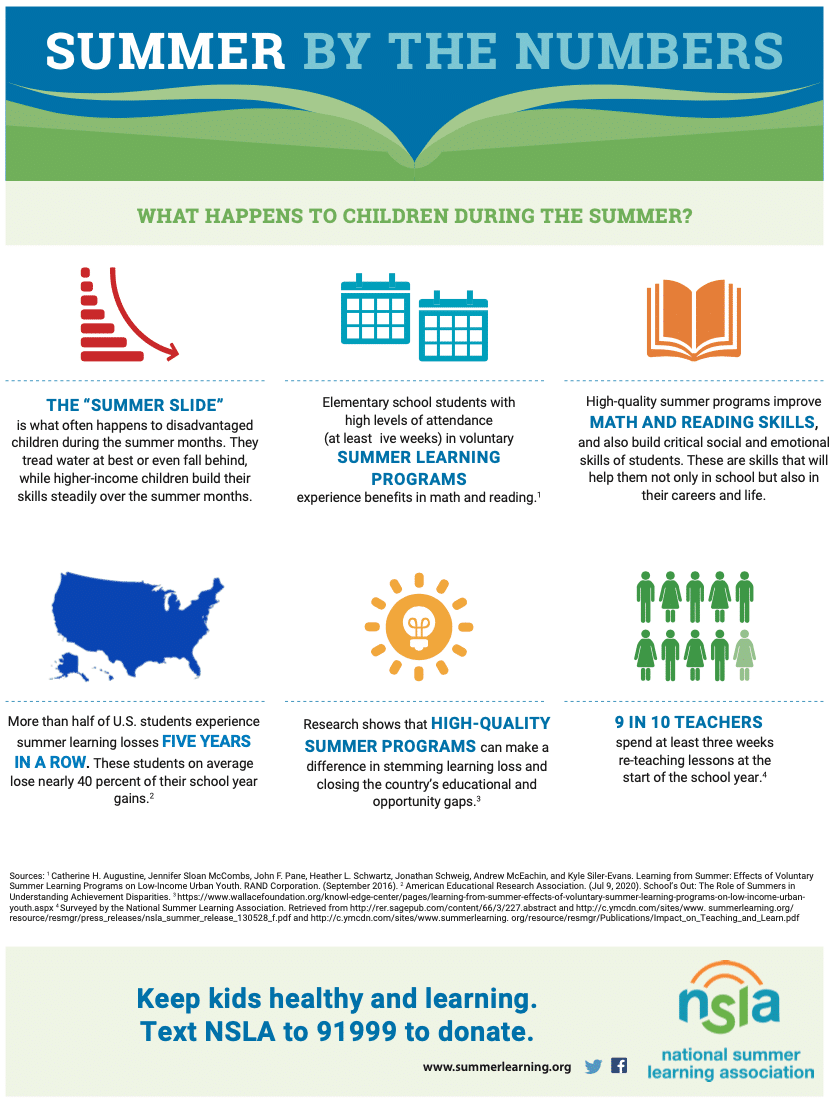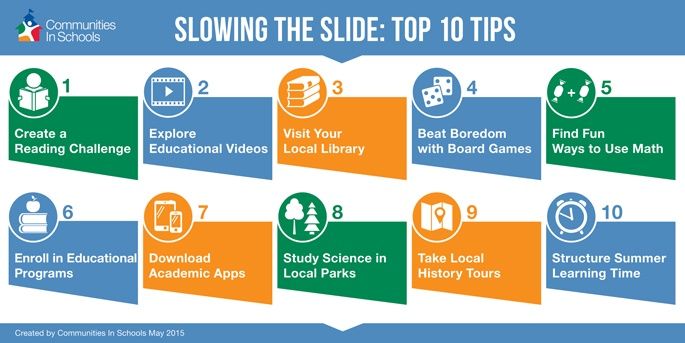Updated May 27, 2021.
By the time June rolls around, most students and educators alike are sprinting toward the light at the end of the tunnel: The one, the only, hard-earned and highly-coveted summer break.
After nine months of tireless work, they surely deserve it. But it’s hard to talk about summer break without also talking about the elephant in the room: The dreaded “summer slide.”
The more we learn about the effects of summer learning loss on students, the harder and harder it becomes to ignore. At a time when budgets are strapped and students are struggling, it’s difficult to justify wasting time and resources by spending each Fall reteaching content that is lost over the summer.
In this blog post, we’ll cover the basics of the summer slide — what and who are at risk and why — as well some tips and tricks for mitigating the effects of summer learning loss.
The Importance of Summer Learning
As much as we love summer break, its original function was not to relieve exhausted and overworked educators and students.
Many argue that nine-month school calendar is a relic of the agricultural era when 85 percent of Americans worked in the agricultural industry. This perspective claims that — at a time when only three percent of Americans work in this industry — this model no longer holds water.
Others have made compelling cases that the creation of the 9-month calendar had less to do with accommodating farmers and more to do with the lack of modern air-conditioning technology, which resulted in sweltering classrooms that were not conducive to learning.
Regardless of its roots, many studies have corroborated that summer break has a negative impact on student learning. On average, it is predicted that students lose about one month’s worth of learning over the summer. In math and reading, these predictions are even more drastic, with an estimated two months of learning loss in some studies.

“Summer by the Numbers” infographic created by the National Summer Learning Association.
This atrophy wastes valuable time in school at the beginning of the next Fall when students have to relearn much of what was lost over the summer. Some estimates suggest that teachers spend up to six weeks each Fall re-teaching old material.
The worst part? Research shows that the summer slide has its greatest impact on students of low socioeconomic status, whose parents are not able to provide the same summer learning opportunities as wealthier parents — from summer camps to educational trips to museums, zoos, etc. to books and other school supplies.
In fact, some even claim that summer learning explains up to two-thirds of the income-based achievement gap.
Together, these statistics ought to inspire us to act. Whether or not summer break is here to stay, we must find creative solutions to mitigate summer learning loss and close the income-based achievement gap.
Ways to Avoid the “Summer Slide”
When it comes to summer learning, there are many ways to help kids keep their skills sharp and their minds engaged. You can encourage parents to consider the following options this summer:
- Educational summer programs
- Online summer courses
- Summer camps (online or face-to-face!)
- Events at the local community center or library
- Educational apps and computer games
- Practice workbooks
- Reading challenges

“Slowing the Slide: Top 10 Tips” infographic created by the Communities in Schools (CIS) of Greater New Orleans
All of these are great options, but if parents do not have the resources to pay for the more expensive options, they can also find ways to sneak learning into everyday activities. For example, parents can pull math and literacy practice into:
- Cooking with their children
- Playing board games that require kids to read and count
- Taking care of pets or a garden
- Watching sporting events
- Shopping and handling money
Many parents understand the importance of encouraging their children to read over the summer but — as Leah Shafer from Harvard’s Graduate School of Education writes — they often find it more challenging to incorporate math into their daily routines.
The simple tricks above illustrate how math instruction doesn’t always have to include figures and charts. If you’re cooking together, Shafer says, you might choose to halve or double a recipe and then ask your child to help you calculate the new measurements.
All of this goes to show that summer learning does not have to be devoid of fun. In fact, finding playful ways to get students learning over the summer might be key to boosting their odds of success.

